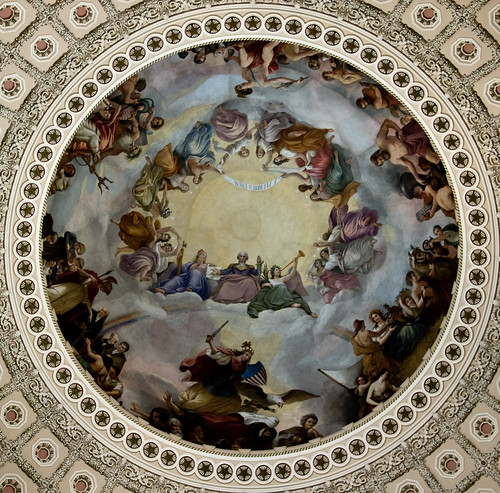 For next Thursday, you’ll be reading most (but not all) of the Francois Furstenberg book. (See the schedule for full details.)
For next Thursday, you’ll be reading most (but not all) of the Francois Furstenberg book. (See the schedule for full details.)
Below are the questions you should use to prepare for our discussion. You should also choose ONE prompt as the basis for your reading response, which you will write on a new page in your Google Doc.
- For Furstenberg, what was the fundamental “problem of U.S. nationalism” in the early decades of the United States? Did widespread veneration of George Washington solve that problem?
- One reason some Americans become “legendary” is because they represent or symbolize popular values or ideals. But Furstenberg also suggests that looking at the legends surrounding Washington can tell us a great deal about what Americans most feared during the nation’s early decades. What did Americans most fear in these years, and how did those fears influence portrayals of Washington? Do you think “fears” continue to play a role today in the way Americans remember the past?
- One of the concepts that Furstenberg frequently uses in his book is that of “civic texts.” Based on his definition of that concept in the book and in Appendix 1, are there any “canonical” texts (like speeches, books, or famous documents) that continue to function as nationalist “civic texts” today? Since Furstenberg also uses early American schoolbooks as one example of “popularizing” civic texts, do you think your own past textbooks or books you were asked to read in high school (for summer reading, for example, or in preparation for an AP test) can be described as “civic texts”?
- Is there good historical evidence for the story, told by Weems, Thayer, and others, that Washington chopped down a cherry tree and later confessed to it? If not, what accounts for the origins and continuing popularity of that story?
- After reading Furstenberg’s book, do you think that George Washington should be remembered as a “proto-abolitionist”?
- One of Furstenberg’s arguments is that “nationalism” has a lot in common with “religion.” In what ways was that true in the early national period, based on the evidence in the book? Where do the similarities end, in your mind?
After reading the assigned text for this week, you might enjoy this brief op-ed piece that Furstenberg wrote for the New York Times several years ago on the Fourth of July. In it, he makes the case that men like Mason Locke Weems were as much the “founding fathers” of the nation as men like Washington, since they popularized and glorified the legacies of the nation’s first leaders. After reading about Weems in detail in the book, would you agree with that assessment?
Image credit: This painting of Washington, depicting him as almost godlike, appears on the dome in the rotunda of the U.S. Capitol Building. The photograph of the painting displayed here was posted on Flickr by “H4NUM4N.”

